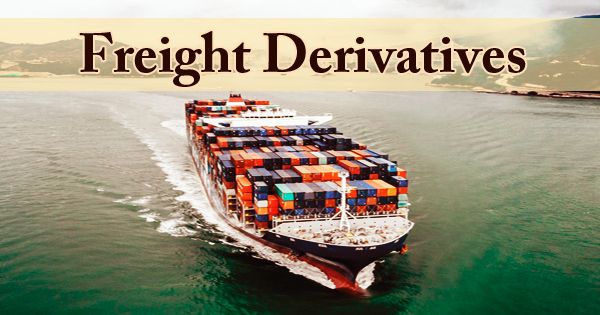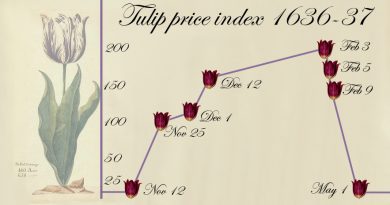Freight Derivatives Meaning Overview FAQ

Freight Derivatives: Meaning, Overview, FAQ
What Are Freight Derivatives?
Freight derivatives are financial instruments derived from future freight rates, such as dry bulk carrying rates and oil tanker rates.
These derivatives are used by ship owners, grain houses, integrated oil companies, and trading corporations to mitigate risk and hedge against price volatility in the supply chain. Market speculators, including hedge funds and retail traders, also participate in buying and selling freight contracts, contributing to a more liquid marketplace.
Key Takeaways
- Freight derivatives derive their value from freight rates, including dry bulk carrying rates.
- These instruments help ship owners and operators manage freight rate risk.
- Freight derivatives include exchange-traded futures, swap futures, forward freight agreements (FFAs), and container freight swap agreements and derivatives.
- The Baltic Dry Index is a market barometer and leading indicator of the shipping industry.
How Freight Derivatives Work
Freight derivatives include exchange-traded futures, swap futures, forward freight agreements (FFAs), container freight swap agreements, container freight derivatives, and physical deliverable freight derivatives.
These instruments are settled against freight rate indexes published by the Baltic Exchange and the Shanghai Shipping Exchange. Cleared contracts are margined on a daily basis through designated clearinghouses. Investors receive or owe the difference between the price of the contracts and the market index at the end of each day. Leading exchanges such as the NASDAQ OMX Commodities, European Energy Exchange, and Chicago Mercantile Exchange (CME) provide clearing services.
Freight derivatives have become a viable method for managing freight rate risk in shipping markets, benefiting ship owners and operators, oil companies, trading companies, and grain houses.
Special Considerations
The London-based Baltic Exchange issues the daily Baltic Dry Index, which serves as a market barometer and leading indicator of the shipping industry. It provides insight into the price of moving raw materials by sea and helps price freight derivatives. The index includes 20 shipping routes measured on a time charter basis and covers different-sized dry bulk carriers, including Handysize, Supramax, Panamax, and Capesize.
Ship owners use the index to monitor and protect against drops in freight rates, while charters use it to mitigate the risks of rising rates. The Baltic Dry Index is considered a leading indicator of economic activity because a rise in dry bulk shipping signals growth in raw production materials.
Freight Derivatives and Forward Freight Agreements (FFAs)
FFAs, the most common freight derivative, are traded over the counter based on the terms and conditions of the Forward Freight Agreement Broker Association (FFABA) standard contracts. The main terms include the agreed-upon route, time of settlement, contract size, and settlement rate.
FFAs were developed for shipping in the early 1990s. They are traded over-the-counter and on exchanges. Trades are often unpublished and done on trust alone. The contract expires on the settlement date, and if the agreed price is higher than the settlement price, the seller pays the difference to the buyer. Conversely, if the agreed price is lower, the buyer pays the seller the difference. The settlement and contract price difference is then multiplied by the cargo size or voyage duration.
Where Are Freight Derivatives Traded?
Freight derivatives are often traded over-the-counter (OTC) and increasingly available on exchanges. The U.K.’s Baltic Exchange (now part of the Singapore Exchange Group (SGX)) and the all-electronic Intercontinental Exchange (ICE) facilitate trading in FFAs.
How Do Freight Derivatives Help Businesses Hedge?
Freight derivatives allow companies to lock in shipping rates and avoid exposure to future fluctuations. This is useful for shipping line operators, freight forwarders, cargo owners, and their customers in navigating uncertain conditions.
What Does Dry Bulk Mean?
Dry bulk refers to freight shipped in large, unpackaged parcels, often by sea. It includes commodities like grains, coal, metal ore, cement, chemicals, and more, measured in "tons of deadweight" (dwt). The Baltic Dry Index (BDI) tracks changes in the cost of transporting various dry bulk commodities globally.
Dry bulk refers to freight shipped in large, unpackaged parcels, often by sea. It includes commodities like grains, coal, metal ore, cement, chemicals, and more, measured in "tons of deadweight" (dwt). The Baltic Dry Index (BDI) tracks changes in the cost of transporting various dry bulk commodities globally.


